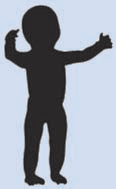
Europe is building its own global satellite navigation system, Galileo, which will offer very accurate positioning and timing, under civilian responsibility. This system will be compatible with the two other existing systems, GPS and GLONASS. A user will be able to use the same receiver to calculate his position from signals sent out by any satellites combination, however Galileo will offer to all users a bi frequency system that will allow knowing position within one meter of accuracy, which is unprecedented for an openly accessible service. Apart from extreme circumstances, it will always be available and its users will be informed in a few seconds of a potential disruption of one of the satellites. Thus it will be usable for safety of life applications, requiring the highest security level, such as plane landing, train circulation or car guidance.

Any look into the crystal ball of (even the near) future is fraught with caveats, error, and less than perfect clarity. However, certain extrapolations and not-so-wild guesses do exist.
GNSS, General – Existing (and near term proposed) systems will continue to expand, receive modernization support, and move (slowly) towards increased interest in securitizing systems and data utilized in the GNSS sourceto- user “food chain”. Nationalism of systems and (at least regionalism of) augmentation sources will progress.

Volume VI, Issue 7, July 2010
Zip
GNS What next?
F Michael Swi ek, Miguel Angel Martínez Olagüe, Bruce Peetz, Keith D McDonald, Bernhard Richter, Ir. Hans Viss er, John Pottle, Thom as Seiler, Sang Jeong Lee
Tsunami three years down the line
Prem Shanker Goel, Prof Tad S Murty, Rehabiliation and reconstruction bo ard, Indo …

There are lots of needs for a unified platform that allows efficient GNSS (Global Navigation Satellite System) receiver development and testing for various applications. With the current functionality of the GPS constellation and the promise of the future Galileo constellation, many efforts have been focused on the 1575.42MHz L1 signals for the GNSS software receiver implementation. GPS (Global Positioning System) L1 or Galileo E1…

The tools of GI Science deal with geospatial information in which spatial relationships are the fundamental data. Fundamental data is that which relates to geolocation or spatial data that will permit the mapping of any object in terrestrial space. But, GI Science may also handle a diverse range of personal information from the truly ‘personal’ ones through to those of a more general nature – age, gender, height, home address, social security number…

Prem Shanker
Goel is Secretary to the Government of India,
Ministry of Earth Sciences (MoES).
India has recently launched the National Tsunami Early Warning System (TEWS) established by Ministry of Earth Sciences. Coordinates discussed various aspects of the TEWS with Dr P S Goel, Secretary to the Government of India, Ministry of Earth Sciences
Who can forget December 26, …
In looking ahead at what milestones we may expect to see during 2008 in the world of GPS and GNSS it is easy to be caught at one of two extremes. The first extreme would be to make the mistake of the shortsighted person who in the late nineteenth century proposed that the US Patent Office should be closed because everything conceivable had already been invented. The other extreme would be to look ahead at the promise of new constellations…

Real-time traffic information to reach more than 83 million users
According to ABI Research, real-time traffic information services will reach more than 83 million paid or registered users worldwide by 2012. It sees three elements to the puzzle of providing truly useful traffic data for navigation systems.
First, the traffic data collection ecosystem is very complex. Infrastructure measurement systems (road sensors, cameras, radar, or loop sensors) are expensive and hard to install. A second challenge is traffic data aggregation. As the basic data becomes more available, the complex data derived from floating-car probes or predictive modeling will become the differentiator. But such data are harder to integrate into navigation routing. A third factor is market landscape. ABI Research expects INRIX and NAVTEQ/Traffic. com to become the two players in traffic data. www.gpsbusinessnews.com

Price war eminent in PND market
The PND (portable navigation device) market in Taiwan is likely to set into a price war due to the planned importation of ultra low-priced GPS devices from China. GPS makers in China plan to establish a ‘Triple Nine’ alliance, aiming to push sales of PNDs at prices below 999 yuan (US$135) in the China market. Vendors of Garmin, TomTom and Mio – stated that they are not concerned about the price competition, and will differentiate from China-made products with improved quality and innovative software. www.digitimes.com

Trimble technology for largest Road Project in Western Australia
Trimbles machine control systems and two-way data communications technology are being used for the construction of the New Perth Bunbury Highway—the single largest road project ever undertaken in Western Australia. The project is expected to be constructed over three years and will include the placement of approximately nine million cubic meters of soil to raise the road alignment. www.trimble.com










 (5.00 out of 5)
(5.00 out of 5)